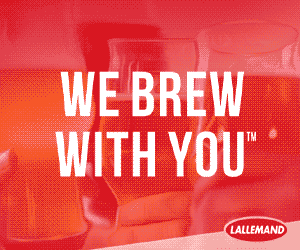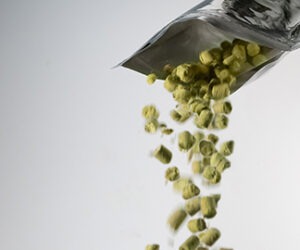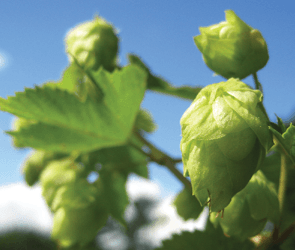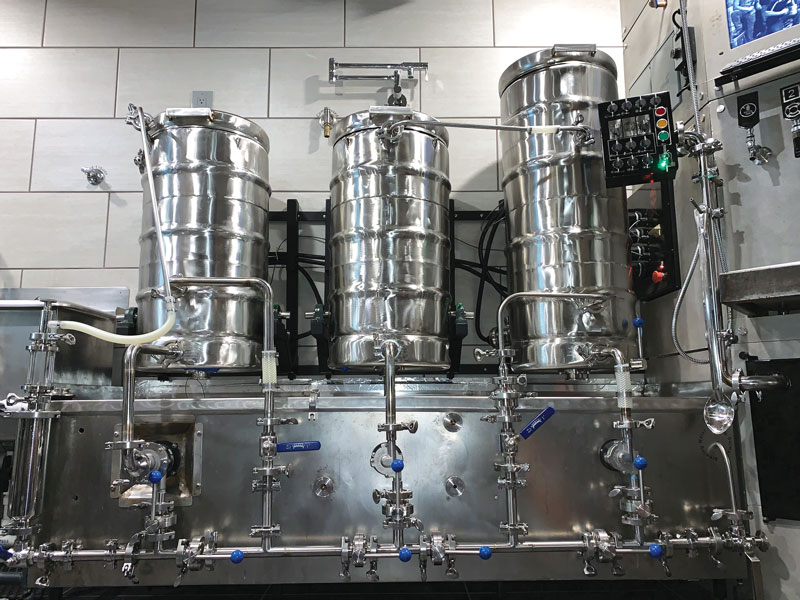Appreciating the Classic Hops
The classics are classics for a reason. Whether talking about books, music, or even beer, it is important to understand what the classics are and why they hold that special title. Classics broke the established mold, defined genres, and inspired imitators.
In the world of beer, hops were the single most important ingredient that defined and shaped the American craft beer movement. And two hop varieties that are undisputedly enshrined as classics because of this movement are Cascade and Centennial. These two hops did have their share of troubles to start, but they went on to dominate usage in both commercial brewing and homebrewing throughout the 1990s and at the turn of the century. They have also managed to survive and solidify their place as two of the top hops, while other varieties from the same era like Liberty and Willamette have almost been forgotten and replaced.
Because many popular hop varieties from the early craft beer movement have been left by the wayside, it is difficult to single out another variety that is deserving to stand side-by-side with Cascade and Centennial. Certainly Chinook, the single hop featured in Stone’s Arrogant Bastard Ale, has some claim to the classics’ crown and still occupies a good chunk of acreage. There is also an argument to be made for Columbus, Tomahawk®, and Zeus, (the CTZ hops) but even though those varieties made a rebound in 2018 due to their alpha market potential, total acreage is still down by about 40% from 2000 (USDA Crop Production August 2018).
2018 was a milestone year because Cascade was unseated as the top hop by acreage planted. Its number one position was usurped by one of the newer kids on the block, Citra®. “I’d say that the search for all things new is ultimately what sets craft beer drinkers and brewers apart,” said Julian Healey author and founder of Hopslist.com. “Most craft beer consumers expect variety and experimentation from craft breweries. Loyalty in that regard is given to brewers who offer consistent quality and creativity amid that variety. I believe it also pushes the whole industry forward.”
So, in an industry driven by consumer tastes seeking out the next new beer or hot hop, what place do the classics have?
Cascade Hops
“Cascade is the definitive hop for American craft brews.” — Third Edition of the Barth-Haas Hops Companion

Cascade was the result of decades of work by the USDA breeding program at Oregon State University. Back in 1956 when the first seed was selected by breeder Stan Brooks, Cascade was simply known as plant 56013.1 Genetically, Cascade was considered a bit of a mutt, with English Fuggle for a mother and a Russian father named Serebrianka. The result was a unique floral and citrus aroma that is best described as zesty grapefruit. But even though Cascade offered a unique and now-desirable aroma, its fate was not always certain. When the first test plots were harvested in 1969 there were no buyers and no interest. After being in development for 13 years, it looked like Cascade was doomed to the slash pile. It was not until verticillium wilt destroyed the Mittelfrüh crop over in Germany that Cascade secured its first contract. Coors Brewing Co. was the first brewery to sign Cascade contracts, and many other breweries quickly followed in looking for an American-grown alternative to imported European hops.
Cascade was officially released in 1972 and by 1976 it accounted for 13 percent of hop acreage in the United States. But by 1977, popular opinion already started to turn from Cascade and the Barth Hop Report wrote, “The hope placed in them (Cascade) originally as a replacement for imported European aroma hops was not fulfilled.” Cascade started getting yanked out of the ground as breweries began to back out of contracts. By 1985, Cascade was once again being called a dead variety. Yet in another fortuitous twist, 1985 was the year that Steve Dresler and Ken Grossman from Sierra Nevada Brewing came to the Yakima Valley of Washington State for hop selection. They took out a 3-year contract on Cascade and the rest is well-known history. “Cascade was the first, and for quite a while the only, hop available that exhibited what has become known as New World character — mostly thinking about citrus fruits and pine. And Sierra Nevada played a very large role in making consumers and brewers aware of that,” said Stan Hieronymus, author of For the Love of Hops. Behind their flagship Pale Ale, Sierra Nevada went on to become the second billion-dollar American craft brewery and they still buy more Cascade at the craft level than anyone else.
Eric Desmarais, 4th generation owner of CLS Farms in Moxee, Washington (a sub growing region of the Yakima Valley), grows Cascade and sells it directly to Sierra Nevada for their Pale Ale. He said, “All varieties tend to have a life cycle. Cascade is probably the best example of the longest life cycle and that speaks volumes to its sustainability over the long term and what it gives to brewers. I suspect that Centennial and Chinook will have a shorter lifecycle than Cascade. I think Cascade is still with us for quite a while longer, but I could see maybe some other publics (publicly owned varieties through the USDA, not a branded, trademarked, or patented hop) coming in and starting to replace Centennial and Chinook. But interestingly enough, Centennial and Chinook are both very unique varieties, each with their own unique aromas, so there won’t be anything to replace them for quite some time.”
Cascade’s longevity can at least in part be attributed to its versatility. By today’s standards it has a lower alpha acid percentage (4–7%), but Cascade still gets used in both bittering and aroma applications. Its lower bittering power is a blessing in some ways, as it allows Cascade to be used in almost any style as it does not overpower even the lightest of lagers. But its real value is in the zesty, fresh grapefruit aroma that defined a generation of beer.
Centennial Hops “The Little Lost Puppy”
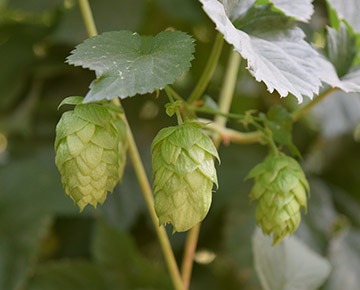
Centennial was developed by Charles Zimmerman and S.T. Kenny at Washington State University in partnership with the USDA. Centennial owes its name to the Washington state centennial anniversary in 1989, one year before its commercial release in 1990. Centennial was conceived in 1974 and has a mishmash of genetics including Brewers Gold, Fuggle, East Kent Golding, and a smattering of Bavarian hops. Initially described as a “super Cascade,” Centennial offers similar citrus characteristics, but is backed by a woodiness that made it entirely unique. Centennial’s cedar and oaky elements are due to a pair of compounds (cis-rose oxide and caryophylla-3,8-dien-(13)-dien-5-beta-ol) that are prominent in Centennial and are believed to contribute to its unique aroma.1
Desmarais said he is the single largest grower of Centennial with about 560 acres last harvest. “Varieties like Cascade and Chinook were primarily driven by big macros. Coors was the first buyer of Cascade and that’s what gave Cascade its first big opportunity. Same story with Chinook, because a lot of it was — a lot of it is — bought by Coors. But Centennial was just like a little lost puppy in all of that. It had really no advocate to it. It just got bred and released and kind of got a dinky cult following with craft brewers, but just stayed very low acreage. So Centennial’s rise to prominence really is completely on the back of craft brewers, which makes it a uniquely American craft variety.”
Owed most of the credit for popularizing Centennial hops is Bell’s Brewery in Kalamazoo, Michigan. In 1997, before Centennial hops were widely grown, Bell’s brewed their first batch of Two Hearted Ale exclusively using Centennial hops. Two Hearted has gone on to become one of the most iconic American craft beers and has been Bell’s best seller for many years (for more history on Bell’s Brewery and Two Hearted Ale, see the cover story from the December 2018 issue of BYO).
Desmarais expanded his Centennial acreage in 2007, 2012, and in 2016. He said that there is a little backup of Centennial due to recent over-supply, but Desmarais has not seen overall demand for Centennial diminish. “As a true craft variety, Centennial’s demand is really tracking right along with the rest of the craft beer industry and staying strong.”
Centennial’s nickname “Super Cascade” is mostly due to its higher alpha acid percentage (9–13%). This allows it to be an effective bittering hop as well as offering a bigger aroma. Because of this alpha potential, Centennial can be “juiced” or turned into CO2 alpha extract. This helps soak up any surplus crop and adds some price and risk stability for farmers.
Public Display of Affection
“Brewers tell us that public varieties like Cascade and Centennial are important to them,” said Desmarais. “So we try to make that a decent part of the portfolio of varieties we grow. Especially recently, brewers have made a renewed commitment to the public breeding program. Financial commitments. Brewers, from the smallest to the largest, have indicated that they want public hops and they want a strong public breeding program. So now there is a lot of work being done to build that program back up.” The financial commitments that Desmarais talked about come in the form of funding grants from the Brewers Association to the USDA-Agricultural Research Service. The grants will help expand the programs in both Washington and Oregon and help pay for another hop breeder.
With the additional funding also comes a new strategy. “The public space previously has really been driven by the growers, growing for one or two big customers. And where the proprietary varieties really have succeeded is by putting a bunch out there, seeing what sticks, and those that don’t seem to disappear fairly quickly,” said Desmarais. “So now the name of the game is getting out varieties rapid fire and giving the brewers a huge selection to choose from and letting the brewer decide what they like.”
This new approach gives brewers the chance to weigh in on a variety at various early stages in its life. In November 2018, the Brewers Association, in partnership with Yakima Valley Hops, the Hop Research Council, and Draught Lab, hosted the first annual Hopsource. Hopsource was a weeklong sensory panel that allowed brewers of all sizes as well as homebrewers to do sensory analysis on experimental varieties in the public program. This new strategy of brewer-driven demand puts the future of US hop varieties directly in the hands of brewers.
But even when the next big superstar hop comes along, whether public or private, Healey does not see the classics ever leaving us. “There’s still a big place for Cascade and Centennial. They’ve been the backbone of American ales for a really long time and will continue to be,” said Healey. “When it comes to American IPA or APA, I believe the current collective palate expects certain varieties to be present. If you’re making beer to connect with that palate, in that respect, hops like Cascade and Centennial
are irreplaceable.”
What are Agronomics and Why do they Matter?
Even though most varieties of hops come from a very small European gene pool, there are still big differences in disease resistance, yield per acre, and even ideal growing conditions. Agronomics simply refers to how well each variety performs in each of those categories. And in order to become a successful, staple hop, a variety does need to excel across the board to provide a consistent crop from year to year.
“The one thing about those three varieties (Cascade, Centennial, and Chinook), they are super stable from a growing perspective,” said Desmarais. “We know exactly what the disease pressure is on them, we can pin them into a tight yield projection, and picking windows are well known. Those varieties have really vetted themselves out in all those ways. They have been vetted by the brewers and they have been vetted by the growers.”
Alternatively, newer hop varieties sometimes don’t have this advantage. “When new varieties come out, and the speed of new varieties coming out, the pace has really quickened, and so we have seen some new proprietaries that when they are expanded out on a larger scale they start failing from an agronomic perspective,” said Desmarais. “Because when they are on a three-acre or five-acre field, it does not really translate well into when it is spread out over 2,000 acres across three states with three different growing climates. So with some of these proprietary varieties, we have been seeing wild yield fluctuations and in some cases complete failures.”
Not only does the country where a variety is grown matter, but even as little as a 30-minute drive within a growing region can make big differences depending on the variety. Desmarais used Centennial as an example of a finicky hop and said that even within the Yakima Valley, not all the lower valley regions are suited to growing the variety. He said that Centennial is very sensitive to daylight length, which makes it very difficult to grow a quality crop outside of a few select areas in the Yakima Valley.
Centennial’s temperamental nature has caused some problems for the variety as there can be great variances in quality and yield, depending on where it was grown. This has caused some price instability for Centennial, which has led to huge price swings depending on the harvest. This instability has created some headaches for brewers in the past, but Desmarais believes the variety will see a period of consistency over the next couple of years.
Undiscovered Potential
Even today, after decades of use, experimentation, and study, hops like Cascade and Centennial still have their secrets. A hop’s alpha acid is
the primary value that brewers concern themselves with, but there are hundreds of compounds, oils, and flavonoids produced by the hop cone. Much of what is produced by the hop’s flowers is yet undiscovered and unnamed. A typical hop data sheet will include values for, at most, 20 compounds, but even today it is still common industry practice to only include the alpha acid percentage on a label. So this still leaves large swaths of unexplored territory even in classic hops that have been in common usage for decades. “As brewing scientists are able to tell brewers more about what’s inside of hops and how to access that, Cascade will remain valuable, used in blends to create aromas and flavors not associated with Cascade 20 years ago,” said Hieronymus.
It is this blending of hops that holds huge potential for unlocking new aromas and flavors because they are usually greater than the sum of their parts. The main three terpene hydrocarbons found in hop cones are myrcene, humulene, and caryophyllene, but the chemical composition varies based on variety. Some other trace terpenes, such as linalool and geraniol, are present in some varieties, but not others. These terpenes can go through chemical restructuring in the presence of yeast in what is commonly referred to as biotransformation. This process can combine terpenes into entirely new aromas and flavors, but the whole process might be dependent on having a trace terpene available to act as a catalyst.
New World Hops Around the World
“What I’m seeing is that the international craft market is mimicking what happened in the US. So if the US is in the seventh or eighth inning of craft, many other countries are just starting in the first inning. So I suspect for quite a number of years, they will trail what happened here and use Cascade, Centennial, and Chinook,” said Desmarais. He explained that maybe as demand starts to dip here in the US for these varieties, new international breweries will make up the difference in demand. “One of Cascade’s greatest attributes is that it can be used in really any style of craft beer, because its aroma is a little bit more muted and more subdued than a Citra®, which is more intense and pointed.” Another one of Cascade’s great attributes is that it can grow and produce in many different climates around the world.
“Terroir has a huge impact on hops,” said Healey. “Brewers in Australia have been using locally-grown Cascade for decades. I know some who refuse to use US Cascade as a substitute for the Aussie stuff when local supply runs out. It’s not that either is necessarily good or bad, they’re just different. That distinction is not genetic, it’s purely down to where it’s being grown. If brewers outside the USA want that “American” Cascade experience, they really do have to get it from the source.”
Desmarais said that every single purchase order he has received from breweries outside of the US asks for Cascade. He estimated that eighty percent also ask for Centennial and sees the continued growth for international demand of US-grown Centennial and Cascade.
“New brewers in other parts of the world are just getting to know New World hops,” explained Hieronymus. “In some cases, they may end up using these public varieties (particularly Cascade) grown in their own country, where terroir will come into play. In many cases, at least when they can get the varieties, they turn immediately to Citra®, Mosaic®, (and) GalaxyTM because they generate the bold, intense aromas and flavors that grab attention. Rather than starting with Cascade and getting to know newer varieties, as American brewers who’ve been in the business a while have, they learn about the new stuff first. Will they do their homework and discover the unique qualities of Cascade and Centennial? That’s where my crystal ball gets too hazy (no references to a beer style intended) to see clearly.”
References
1 Hieronymus, Stan. For the Love of Hops. Brewers Publications, 2012.
